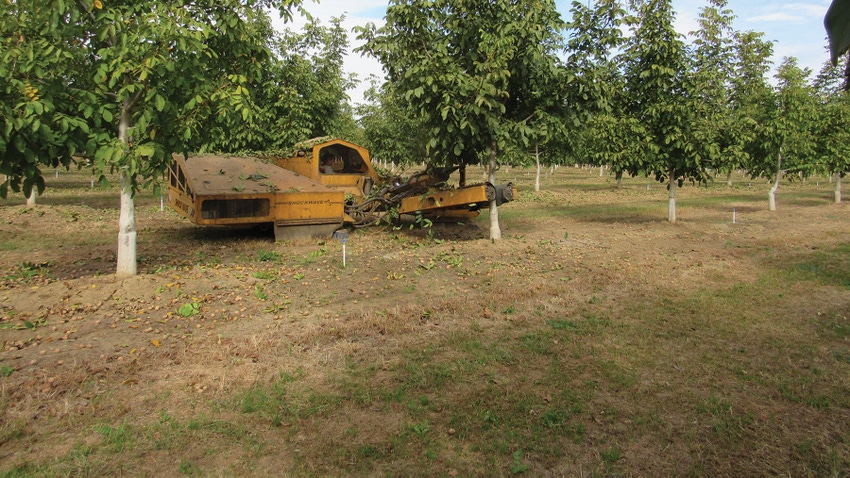
As strong El Nino atmospheric conditions are poised to bring another wet and cold winter, University of California scientists are urging nut growers to plant cover crops in orchards.
With reservoirs and storage basins in Northern California already full after last season’s storms and record snowpack, growers should turn to on-farm water capture to keep as much water locally banked as possible, say UC farm advisers Curt Pierce and Clarissa Reyes.
“The weeks immediately following harvest present the best time of the year to plant cover crops to reap their various benefits in the months ahead,” Pierce and Reyes advise in a fall newsletter for walnut growers.
Cover crops between tree rows offer two benefits in a cold and wet winter – infiltration and frost protection. Last year, orchards with vegetation in the middles typically had far less standing water than those with bare soil, noted Pierce, an irrigation and water resources adviser, and Reyes, an orchard systems adviser. Both scientists are in the northern Sacramento Valley.
The vegetation impedes the flow of water across the orchard floor, and the roots of the cover crop create downward channels deep into the soil profile, allowing more water to percolate rather than running off, the scientists explain.
“The combined effort is overall increased infiltration and water storage in the soil profile and underlying aquifer due to reduced runoff from the soil surface,” the advisers wrote in the newsletter.
The moisture also helps to keep soil temperatures slightly higher than they’d be if they were dry, which could stave off frost damage to trees during cold nights, they advise. The key is to keep the vegetation from growing more than about 2 inches tall so that sunlight can warm the soil during the day.
Mow when it’s dry to prevent soil compaction from equipment.For more detailed information, check out the UC’s 20-page report titled Cover Crops for Walnut Orchards.
Read more about:
WalnutsAbout the Author(s)
You May Also Like






